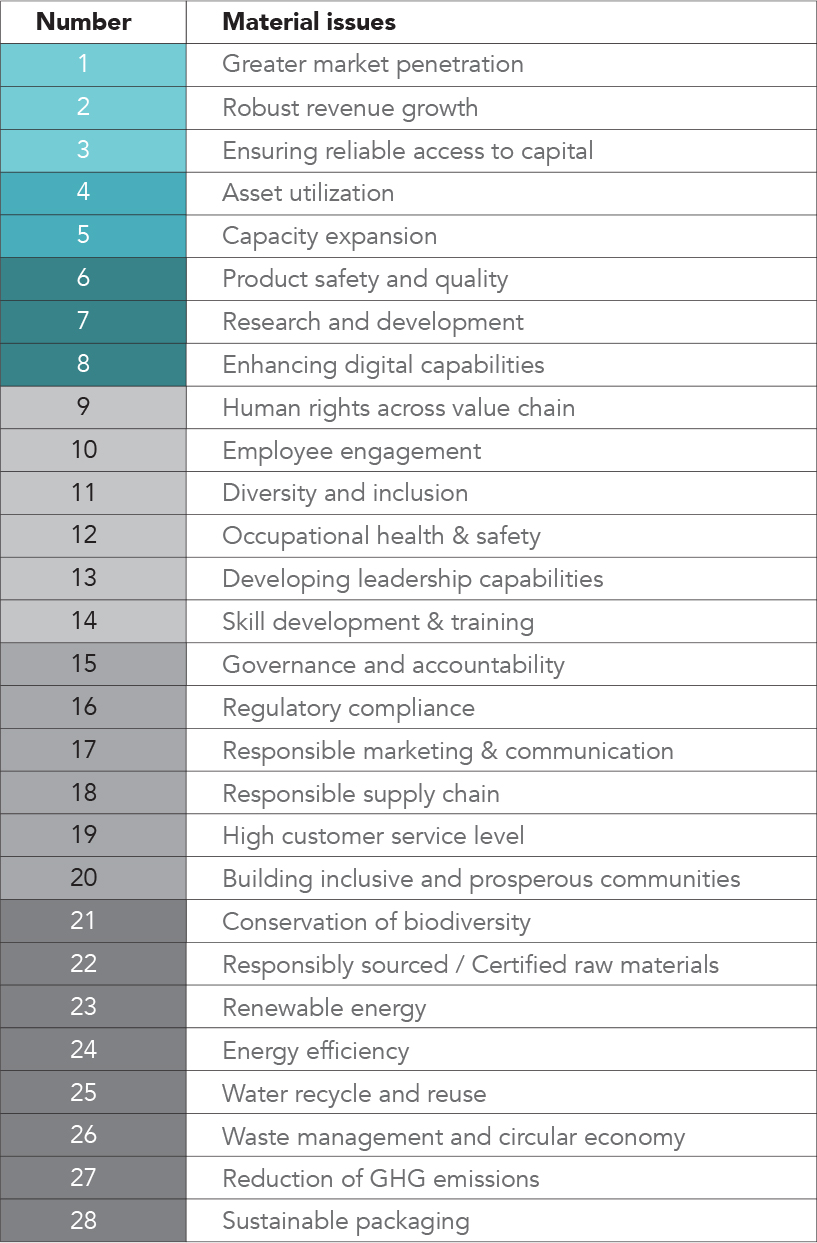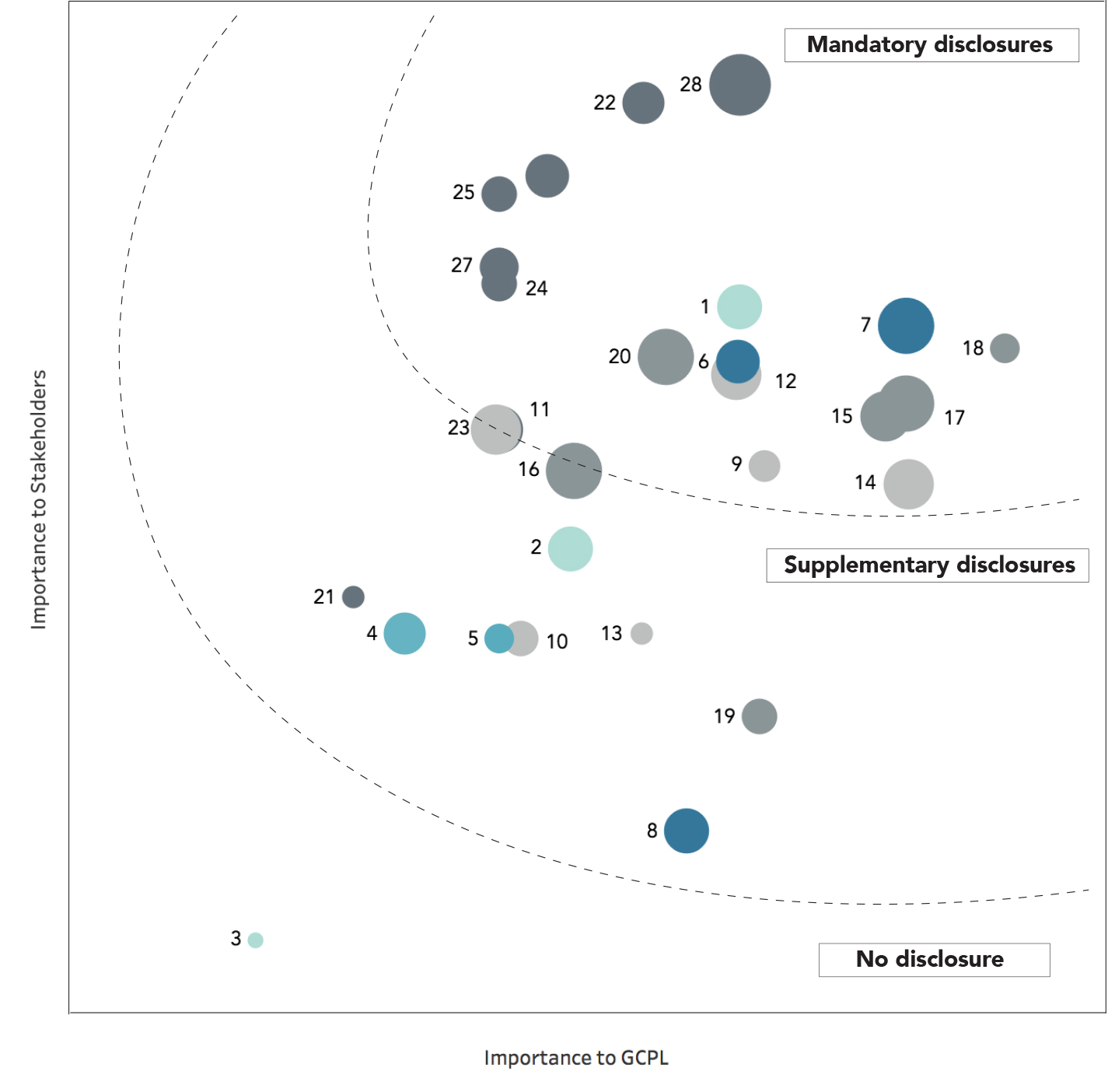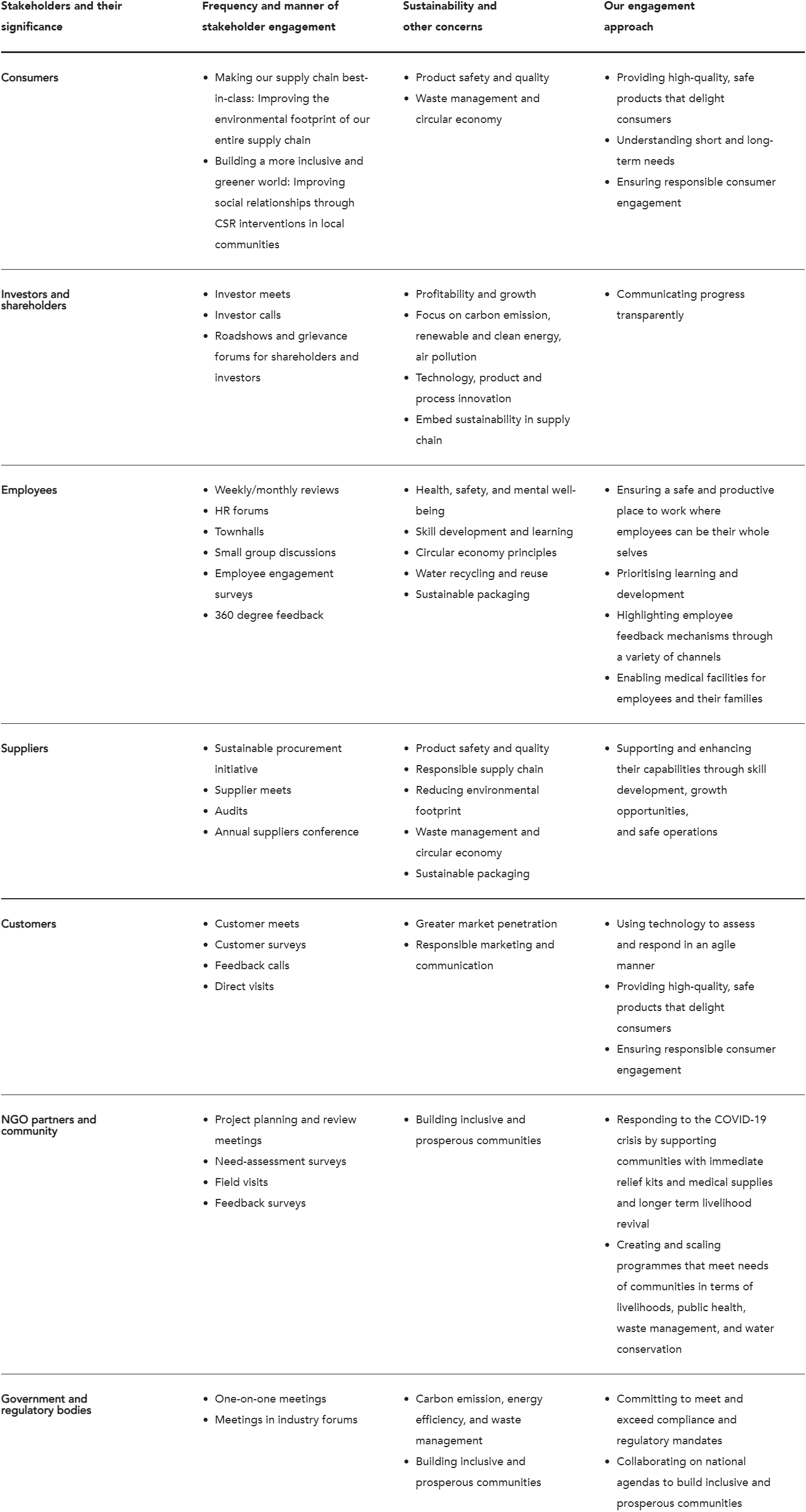Our Research & Development team leads
new product development in India
At Godrej Consumer Products Limited (GCPL), we have been publishing a statutory annual report, in line with the Securities and Exchange Board of India (SEBI) (Listing Obligations and Disclosure Requirements) Regulations, 2015; Companies Act, 2013; and Secretarial Standards. This is our third Annual and Integrated Report, aligned with the principles of the International Integrated Reporting Framework (referred to as the
Content of the report
Through integrated reporting, we aim to share an overview of our financial and non- financial performance that has helped create short-term and long-term value for our stakeholders.
This report provides insights on:
Scope and boundary
This report is for GCPL, including GCPL manufacturing plants in India, Africa, Indonesia, Latin America, and USA. The data and content are consolidated for the business, unless otherwise specified.
Reporting period
All information, financial and non-financial, is reported for the period from April 1, 2020 to March 31, 2021. For our performance on sustainability, we have also incorporated comparative figures for the previous year (fiscal year 2019-20) and baseline year (fiscal year 2010-11 except for statutory financials) for a holistic view.
Management Committee
endorsement and assurance
The GCPL Management Committee remains committed to high levels of disclosure and transparency in communication with all stakeholders. The Committee has been involved in the process of drafting this report and fully endorses its contents.
In addition, GCPL has commissioned TUV India Private Limited to conduct an independent external assurance of non-financial information disclosed in GCPL’s Integrated Report for the period April 1, 2020 to March 31, 2021. It is a ‘limited assurance’ report of GCPL’s sustainability information for the applied reporting period. This assurance statement is based on the principles of IIRC Integrated Reporting, GRI standards, and ISAE 3000 standard.
Materiality
Approach to materiality
We approach materiality from strategic and value-creation perspectives. Material issues are identified by engaging in conversations with our stakeholders and monitoring broad trends in the industry. Performance on material issues forms the core content of this Annual and Integrated Report. In fiscal year 2019-20, we conducted an extensive materiality exercise, which involved engaging an external partner and enabling a thorough understanding of the relationship of material issues with our business risks, objectives, and value creation. The process of determining materiality at GCPL is compliant with the prescriptions of the IIRC and draws from the six capitals of integrated reporting.
Methodology
Materiality analysis was performed through identification and prioritisation. A systematic step-wise process was followed. First, relevant insights were collected through with primary and secondary research, and then, necessary calculations were performed to obtain the materiality matrix. Primary inputs were obtained through direct stakeholder engagement, with discussions on material issues with various stakeholder groups. Furthermore, surveys were conducted to reach out to employees and gather information at scale.
The secondary research primarily involved the analysis of various sector trends, sustainability reports, and select peer analysis. These aspects were further rated by the level of importance by us and our stakeholders.
Overview of the methodology
|
Identify issues across 6 capitals
|
Engage with 450+ key stakeholders on material issues
|
Develop materiality matrix using a specialised tool
|
Stakeholder engagement
Upon identifying a broad list of material issues, interactions were made with each key stakeholder group. Each material issue was assessed for its relative importance with respect to different stakeholder groups and aggregated. Stakeholder analysis was performed by identifying key stakeholders and administering tailored questionnaires to each of them. To develop the materiality matrix, it was necessary to collate stakeholder responses.
Because not all stakeholders are equally important in the organisational context, they were rated based on two parameters: ability to influence GCPL and extent of influence due to GCPL. Stakeholders were then assigned weightages on the basis of these two parameters.
Stakeholder prioritisation
|
Stakeholder group |
Ability of stakeholder to strongly influence GCPL’s performance and operations |
Extent of influence on stakeholder due to GCPL’s performance and operations |
|---|---|---|
| Leadership team | High | High |
| Employees | Medium | High |
| Suppliers | Medium | Medium |
| Distributors | Medium | Medium |
| Consumers | Medium | Medium |
| Investors | Medium | High |
| NGO partners | Low | Medium |
| Beneficiaries | Low | Medium |
| Industrial associations | Low | Medium |
Feedback from stakeholders determined our top material issues, which are all within our boundary of operations. Our material issues are linked to our strategic pillars:
|
Top material issues |
Link to our |
|---|---|
|
|
|
|
|
|
|
|
|
|
|
|
|
|
This diagram maps out the entire universe of material issues and stakeholder input and its significance in our business.
GCPL Materiality Matrix


A note on COVID-19
The materiality study was carried out in fiscal year 2019-20. The COVID-19 pandemic had not spread at that point and so it does not appear as a material aspect.
In fiscal year 2020-21, however, the COVID-19 pandemic has had a multi-fold impact on the business, and this impact and our mitigation strategies are discussed in detail in our Chairperson’s message and our seven Strategic Pillars.
We engage with all our stakeholders on a regular basis to foster and nurture strong relationships, which in turn help us improve our strategy and decision-making and grow our business. In a crisis like the COVID-19 pandemic, our partnerships with our stakeholders became even more important. The table below provides an overview of our stakeholder engagement process and the steps we take to understand the needs and priorities of each stakeholder group.
